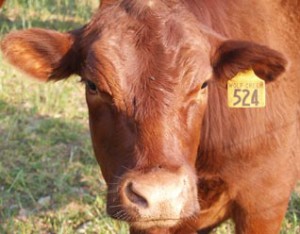 A confluence of factors makes this a very good time to be cow/calf operator. According to a July 24 cattle inventory report from the U.S. Department of Agriculture, all cattle and calves in the U.S. totaled 98.4 million head as of July 1. This is 2% above the 96.3 million head reported July 1, 2014. Although there is a slight increase in the number of cattle, the U.S. is still experience a severe shortage in its supply of cattle. Livestock numbers have been dropping steadily throughout the last decade, and 2014 is the year with the lowest number of cattle on record in some 60-odd years, since Harry Truman was president.
A confluence of factors makes this a very good time to be cow/calf operator. According to a July 24 cattle inventory report from the U.S. Department of Agriculture, all cattle and calves in the U.S. totaled 98.4 million head as of July 1. This is 2% above the 96.3 million head reported July 1, 2014. Although there is a slight increase in the number of cattle, the U.S. is still experience a severe shortage in its supply of cattle. Livestock numbers have been dropping steadily throughout the last decade, and 2014 is the year with the lowest number of cattle on record in some 60-odd years, since Harry Truman was president.
In accordance with the laws of supply and demand, the paucity of cattle in the country has driven cattle prices up. The latest information from the NASDAQ has the price per head of feeder cattle at $210. The all-time high was around $235 during the fourth quarter of 2014, but prices were as low as $170 at the start of 2014 and rose steadily, resulting in unprecedented highs for feeder cattle that are just starting to taper off. If you’re a person sitting on some feeder cattle, it’s anyone’s guess whether or not prices for your product will stay high, but it looks like the market is showing some signs of recovery from a supply perspective.
There may be a shortage of cattle in the country, but there is no shortage of good news for cow/calf operators. Improved precipitation in the Plains States has yielded a good, cheap supply of forage, providing cattle farmers with more nourishment for their herds at ever-cheaper costs. This—rather than the actual population of cattle—may be responsible for the more recent tapering off of feeder cattle prices in recent months. At the time of writing we didn’t have access to very recent prices of forage. However we can tell you that the price of corn (which is the primary source of nutrition for feeder cows after a certain age) has gone down from $7.00/bushel in 2013 to around $3.50/bushel this year. Forage and sustenance for cattle is cheaper and more available than it has been in a while and this, coupled with the recent scarcity of cattle means that cow/calf operators are holding on to more cattle than in recent years. They can afford to feed the cattle more and more, resulting in higher weights (and therefore more money per cow than before). The scarcity also means that more heifers are being retained than would ordinarily; this causes a temporary dip in the supply of cattle with the hope that it’ll yield more cattle in coming generations. Improved pasture prospects means that cattle producers aren’t culling as many cows as they would ordinarily during this time of year; more will be going to slaughter in the fall. It’s feasible that because people are feeding cattle to heavier weights, the decrease in slaughter numbers this year will be offset by an increase in the total amount of beef, considering cows on average will weigh more.
Feedlot operators are struggling, because feeder cattle prices are higher than ever while fed cattle prices are declining. They have more of an incentive to hold out for better prices, just feeding the supply that they currently have and waiting for feeder cattle prices to drop (which evidently they are). This strategy has worked in the past, and as we mentioned earlier, forage is cheap and plentiful right now.
A reduction in cow slaughter means that the demand for importing processed beef has risen. Australia, one of the biggest exporters of beef to the U.S. has experienced severe drought in many major production centers, resulting in the exportation of beef which can’t be sustained within its borders. In the first quarter alone, the U.S. imported 412.3 million lbs. of beef from Australia. Beef imports from Canada, Mexico, and Brazil are also higher than they were this time last year. The USDA predicts the U.S. will import 3.3 billion lbs. of beef by the end of the year. For 2016 however, these numbers are expected to drop as domestic supply of beef rises and Australia begins feeling the longer-term effects of the drought on the cattle industry.